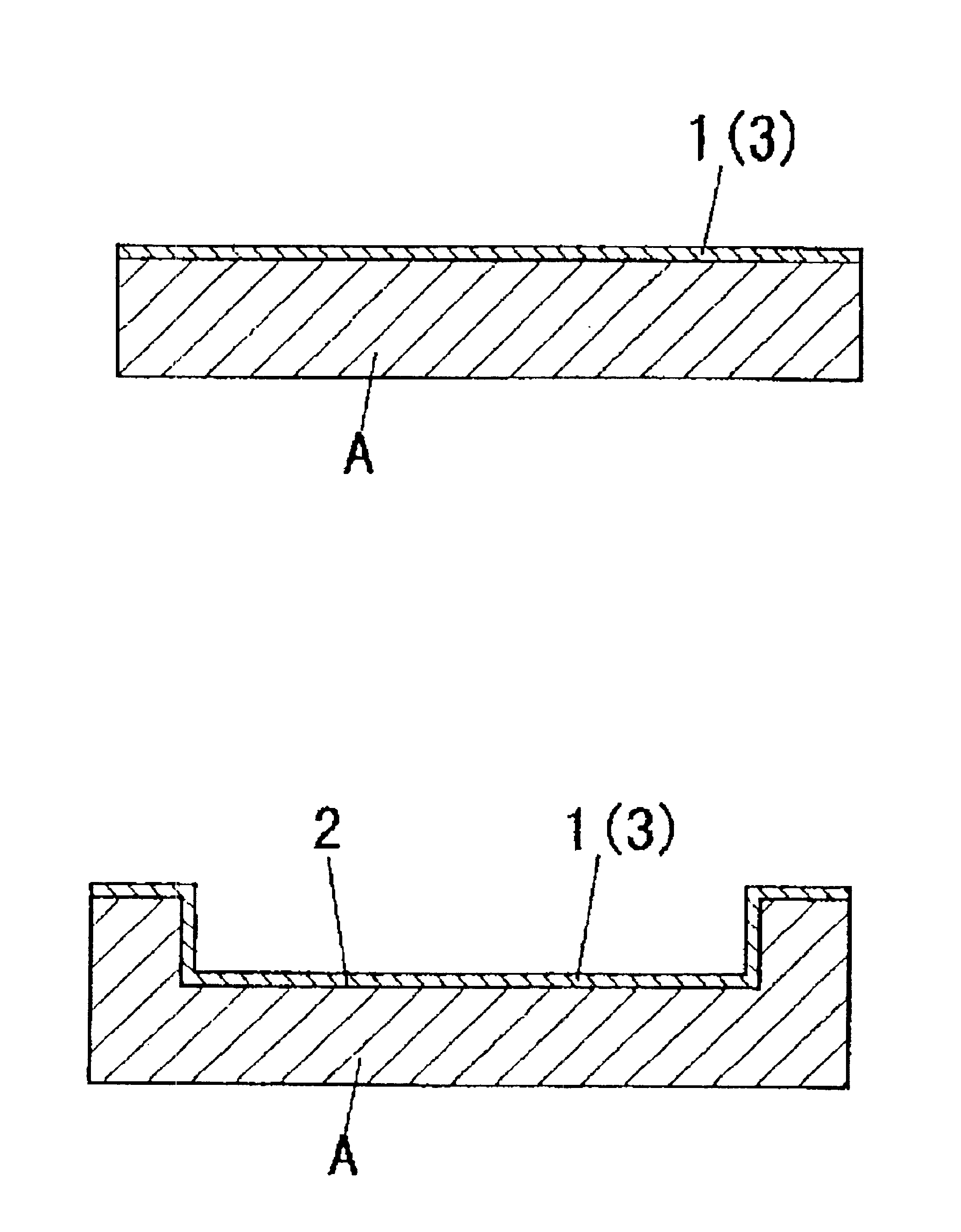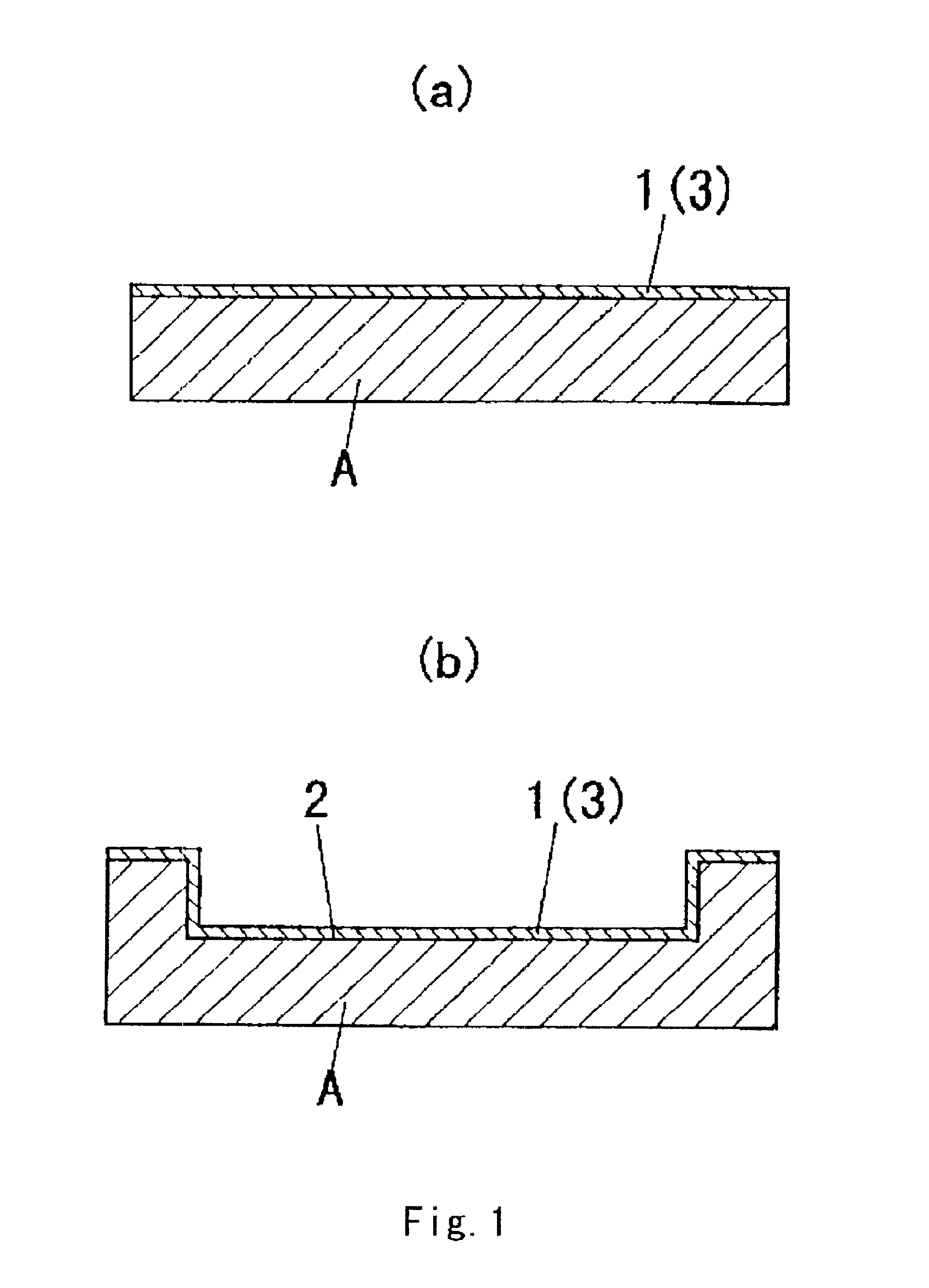Resin moldings
a technology of resin molded components and resin layered products, which is applied in the direction of synthetic resin layered products, thermoplastic polymer dielectrics, solid-state devices, etc., can solve the problems of still more difficult to obtain the metal than by wet methods such as electrolysis or electroless plating, and it is difficult to obtain a high effect of improving the adhesion between the resin molded component surface, so as to improve the adhesion between the metal
- Summary
- Abstract
- Description
- Claims
- Application Information
AI Technical Summary
Benefits of technology
Problems solved by technology
Method used
Image
Examples
example 1
[0066]Using PPA as the base resin, 3 parts in mass of the above-described A as rubber-like elastic material were mixed with to 100 parts in mass of the base resin. This was melted and kneaded at a screw rotating speed of 150 rpm in a twin-screw vent system with 25 mm in diameter and L / D=25, and after cooling a strand obtained, the strand was pelletized to prepare a resin composition. Then, this resin composition was injection-molded to form the resin molded component.
[0067]The surface of this resin molded component was plasma-treated, and the metal layer was formed by sputtering. That is, the resin molded component was firstly set into the chamber of a plasma treatment apparatus, the chamber inside was evacuated to reduce the pressure to about 10−4 Pa, then N2 was introduced and circulated in the chamber as an active gas, the gas pressure inside the chamber was controlled at 10 Pa, and then, 300W power high-frequency voltage (RF: 13.56 MHz) was applied to the electrodes for 30 secon...
examples 2 to 7
, Comparative Examples 4, 6
[0069]Using the base resin shown in Table 1, the rubber-like elastic material shown in Table 1 was mixed by the ratio shown in Table 1 to 100 parts in mass of the base resin. By kneading these in the same manner as Example 1, the resin composition was prepared. From this resin composition, the resin molded component was formed in the same manner as Example 1 and the metal layer was further formed on the surface of the resin molded component.
example 8
[0070]Using the base resin shown in Table 1, the rubber-like elastic material shown in Table 1 was mixed by the ratio shown in Table 1 to 100 parts in mass of the base resin, and further, for the crystal nucleus agent, talc, which is a plate-form inorganic filler, was mixed so that the talc contains 0.7% in mass to the whole resin composition. By kneading these in the same manner as Example 1, the resin composition was prepared. From this resin composition, the resin molded component was formed in the same manner as Example 1 and the metal layer was further formed on the surface of the resin molded component.
PUM
| Property | Measurement | Unit |
|---|---|---|
| length | aaaaa | aaaaa |
| diameter | aaaaa | aaaaa |
| diameter | aaaaa | aaaaa |
Abstract
Description
Claims
Application Information
 Login to View More
Login to View More - R&D
- Intellectual Property
- Life Sciences
- Materials
- Tech Scout
- Unparalleled Data Quality
- Higher Quality Content
- 60% Fewer Hallucinations
Browse by: Latest US Patents, China's latest patents, Technical Efficacy Thesaurus, Application Domain, Technology Topic, Popular Technical Reports.
© 2025 PatSnap. All rights reserved.Legal|Privacy policy|Modern Slavery Act Transparency Statement|Sitemap|About US| Contact US: help@patsnap.com



